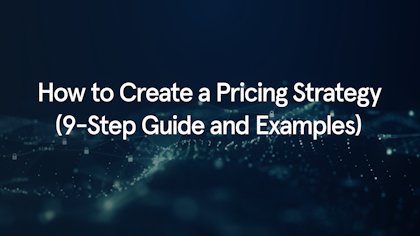To create high-quality recommendations, make sure they are:
- Actionable: Make it as easy as possible for your stakeholders to take the next steps. Ensure the next step is clear and straightforward.
- Specific: Err on the side of more specific and avoid vague concepts or imprecise plans like “Improve customer experience”.
- Insightful: Don’t just identify a problem, show the solution.
- Contextualized: Remember that your recommendation is not isolated. Consider the overall business and stakeholder context, and try to do a quick run-down of the consequences of your recommendation. This helps you tweak it.
The more decisive and specific you can be, the more value you can bring to the table. Push yourself to get to an insight early and don’t be too afraid to suggest the wrong solution. It’s much easier to assess, critique, and improve on specific solutions than general, fluffy recommendations.
Step 3: Take a step back to make sure it’s the right conclusion
The third and final step of getting to the “so what” is to take a step back and pressure-test it. To do this, ask yourself the following three questions:
Am I biased?
You want to make sure you’re not biased in your recommendation or conclusion. Ask your teammates and colleagues in other departments to review your “so what” conclusion and see if they reach the same result. Are there areas where you are jumping to answers because you’re looking at it from a certain point of view? What if someone from a completely different background or team looked at it?
Common bias pitfalls and how to avoid them are:
Overconfidence Bias
- Poor: "This analysis proves we need to immediately implement a new sales team."
- Better: "The data suggests a sales team could improve efficiency. Let's pilot this in one region."
Anchoring Bias
- Poor: "In my last project, the solution was reducing inventory, so let's start there."
- Better: "Let's examine all potential factors affecting performance before determining the solution."
Sunk Cost Bias
- Poor: "We've spent six months on this approach, so we need to make it work."
- Better: "Despite our investment, the data shows we should explore alternative solutions."
Can we get to an even better answer?
Getting to the "so what" isn't a one-time process but rather an iterative method. In practice, this means:
- Testing new hypotheses that arise from your analysis
- Viewing the problem from multiple perspectives
- Leveraging team input to strengthen recommendations
- Continuously refining until you have robust support for your solution
Does this move the needle?
Finally, you want to ask yourself if this really moves the needle. This is typically at the end of a project when putting together your final presentation.
Force yourself to look through all of your slides and ask yourself if this slide is 100% crucial to getting your point across. Make sure the titles of your slides are action titles that reflect the “so what” of each slide and read through only the action titles to make sure the story flows.
Delete any slides or analyses that don’t significantly contribute to your final recommendations or project ask. It can be hard, but the end result will be much clearer and stronger.
Conclusion
The “so what” means pushing yourself to go beyond the right analyses and connect the dots. Getting to the "so what" is the key skill that separates exceptional business analysis from basic reporting. It is a systematic approach to moving beyond surface observations that will serve you at all levels of a project and presentation.
The ultimate goal is not just to understand what's happening in your business, but to know exactly what actions will drive improvement. By following this comprehensive framework and consistently pushing beyond surface-level observations, you can deliver insights that create real business value and drive organizational change.
Remember: The question isn't just "What's happening?" but "What are we going to do about it?"


















